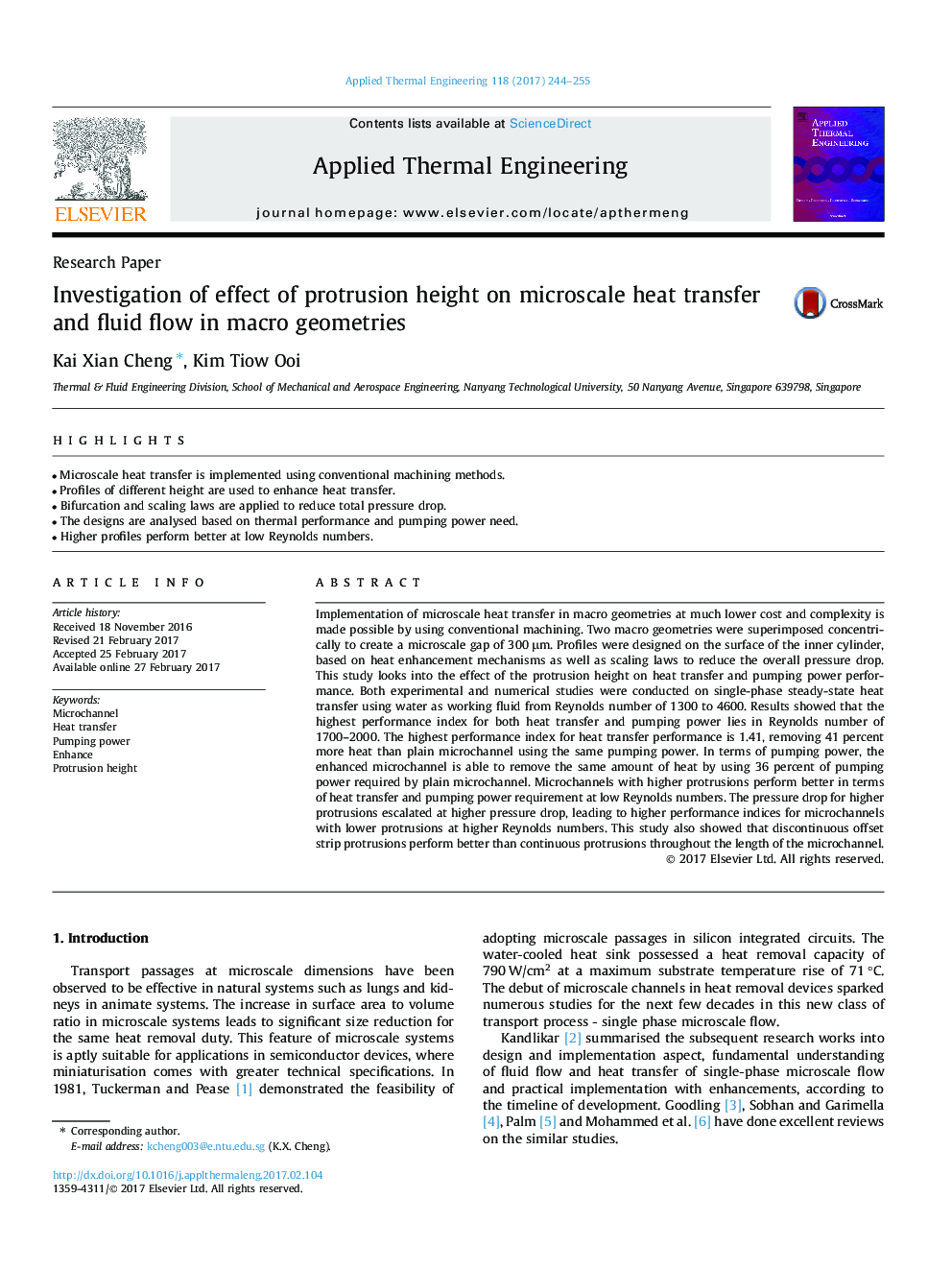| Article ID | Journal | Published Year | Pages | File Type |
|---|---|---|---|---|
| 4991356 | Applied Thermal Engineering | 2017 | 12 Pages |
Abstract
Implementation of microscale heat transfer in macro geometries at much lower cost and complexity is made possible by using conventional machining. Two macro geometries were superimposed concentrically to create a microscale gap of 300 μm. Profiles were designed on the surface of the inner cylinder, based on heat enhancement mechanisms as well as scaling laws to reduce the overall pressure drop. This study looks into the effect of the protrusion height on heat transfer and pumping power performance. Both experimental and numerical studies were conducted on single-phase steady-state heat transfer using water as working fluid from Reynolds number of 1300 to 4600. Results showed that the highest performance index for both heat transfer and pumping power lies in Reynolds number of 1700-2000. The highest performance index for heat transfer performance is 1.41, removing 41 percent more heat than plain microchannel using the same pumping power. In terms of pumping power, the enhanced microchannel is able to remove the same amount of heat by using 36 percent of pumping power required by plain microchannel. Microchannels with higher protrusions perform better in terms of heat transfer and pumping power requirement at low Reynolds numbers. The pressure drop for higher protrusions escalated at higher pressure drop, leading to higher performance indices for microchannels with lower protrusions at higher Reynolds numbers. This study also showed that discontinuous offset strip protrusions perform better than continuous protrusions throughout the length of the microchannel.
Related Topics
Physical Sciences and Engineering
Chemical Engineering
Fluid Flow and Transfer Processes
Authors
Kai Xian Cheng, Kim Tiow Ooi,
